William Scott CBE RA (1913-1989) Still Life with Pan and Bowl (WS 174) (1971) Oil on canvas, 101.8 x 101.7cm (40 x 40'') Archive Number 0374 Literature: Sarah Whitfield (ed.),William Scott Catalogue Raisonné of Oil Paintings, Vol. 4, Thames and Hudson in association with William Scott Foundation, London 2013, cat. no. 699, illustrated p.78. Undated, this painting was judged to have been made around 1971 by the editors of the William Scott Catalogue Raisonné, as it matches closely with other works produced in the early 1970s. While on one level it is almost abstract, with its two outline forms and flat colour, it is also unmistakably a still life. The flattened, stylised outlines of a frying pan and a bowl dominate. The colour accentuates the iron pan and the ceramic vessel against a warm earth ground. The painting strikingly recalls one of Scotts first post-war still lifes: The Frying Pan, painted in 1946 (in the English Arts Council collection), likewise focused on a similarly positioned bowl and pan, one of a series of works that marked the beginning of his artistic maturity. It is interesting that he kept this later painting for a considerable time before giving it to a collector of his work. Scott is among the minority of 20th century artists to focus predominantly on still life. Giorgio Morandi is the other most famous example and, like Morandi, Scott imbued the genre with a monumental quality: arrangements of simple kitchen objects have an architectonic scale and scope. Landscape and the human figure were Scotts other predominant subjects, and in the early 1970s he was also making economically stated, elegant figure studies. Its possible to see symbolic links with the figure in many still life works. From the latter half of the 1950s, Scott had absorbed the influence of Egyptian art. Its hieratic character, flattened, stylised forms, clear outlines, strictly limited palette and repetitious patterning all contributed greatly to the evolution of his work and the Egyptian influence is clearly evident in this painting recalling a key moment in his artistic evolution. One of the foremost painters of the 20th century, Scott was of mixed Scottish-Irish parentage. He grew up in Enniskillen, studied art in London and thereafter spend most of his life in the UK, though he and his wife Mary were enthusiastic travellers. He was the subject of many exhibitions and accolades nationally and internationally and his work is in numerous public collections. Aiden Dunne, November 2019 We are grateful to the William Scott Foundation for their kind assistance with the cataloguing of the present work. William Scott CBE RA (1913-1989) Still Life with Pan and Bowl (WS 174) (1971) Oil on canvas, 101.8 x 101.7cm (40 x 40'') Archive Number 0374 Literature: Sarah Whitfield (ed.),William Scott Catalogue Raisonné of Oil Paintings, Vol. 4, Thames and Hudson in association with William Scott Foundation, London 2013, cat. no. 699, illustrated p.78. Undated, this painting was judged to have been made around 1971 by the editors of the William Scott Catalogue Raisonné, as it matches closely with other works produced in the early 1970s. While on one level it is almost abstract, with its two outline forms and flat colour, it is also unmistakably a still life. The flattened, stylised outlines of a frying pan and a bowl dominate. The colour accentuates the iron pan and the ceramic vessel against a warm earth ground. The painting strikingly recalls one of Scotts first post-war still lifes: The Frying Pan, painted in 1946 (in the English Arts Council collection), likewise focused on a similarly positioned bowl and pan, one of a series of works that marked the beginning of his artistic maturity. It is interesting that he kept this later painting for a considerable time before giving it to a collector of his work. Scott is among the minority of 20th century artists to focus predominantly on still life. Giorgio Morandi is the other most famous example and, like
William Scott CBE RA (1913-1989) Still Life with Pan and Bowl (WS 174) (1971) Oil on canvas, 101.8 x 101.7cm (40 x 40'') Archive Number 0374 Literature: Sarah Whitfield (ed.),William Scott Catalogue Raisonné of Oil Paintings, Vol. 4, Thames and Hudson in association with William Scott Foundation, London 2013, cat. no. 699, illustrated p.78. Undated, this painting was judged to have been made around 1971 by the editors of the William Scott Catalogue Raisonné, as it matches closely with other works produced in the early 1970s. While on one level it is almost abstract, with its two outline forms and flat colour, it is also unmistakably a still life. The flattened, stylised outlines of a frying pan and a bowl dominate. The colour accentuates the iron pan and the ceramic vessel against a warm earth ground. The painting strikingly recalls one of Scotts first post-war still lifes: The Frying Pan, painted in 1946 (in the English Arts Council collection), likewise focused on a similarly positioned bowl and pan, one of a series of works that marked the beginning of his artistic maturity. It is interesting that he kept this later painting for a considerable time before giving it to a collector of his work. Scott is among the minority of 20th century artists to focus predominantly on still life. Giorgio Morandi is the other most famous example and, like Morandi, Scott imbued the genre with a monumental quality: arrangements of simple kitchen objects have an architectonic scale and scope. Landscape and the human figure were Scotts other predominant subjects, and in the early 1970s he was also making economically stated, elegant figure studies. Its possible to see symbolic links with the figure in many still life works. From the latter half of the 1950s, Scott had absorbed the influence of Egyptian art. Its hieratic character, flattened, stylised forms, clear outlines, strictly limited palette and repetitious patterning all contributed greatly to the evolution of his work and the Egyptian influence is clearly evident in this painting recalling a key moment in his artistic evolution. One of the foremost painters of the 20th century, Scott was of mixed Scottish-Irish parentage. He grew up in Enniskillen, studied art in London and thereafter spend most of his life in the UK, though he and his wife Mary were enthusiastic travellers. He was the subject of many exhibitions and accolades nationally and internationally and his work is in numerous public collections. Aiden Dunne, November 2019 We are grateful to the William Scott Foundation for their kind assistance with the cataloguing of the present work. William Scott CBE RA (1913-1989) Still Life with Pan and Bowl (WS 174) (1971) Oil on canvas, 101.8 x 101.7cm (40 x 40'') Archive Number 0374 Literature: Sarah Whitfield (ed.),William Scott Catalogue Raisonné of Oil Paintings, Vol. 4, Thames and Hudson in association with William Scott Foundation, London 2013, cat. no. 699, illustrated p.78. Undated, this painting was judged to have been made around 1971 by the editors of the William Scott Catalogue Raisonné, as it matches closely with other works produced in the early 1970s. While on one level it is almost abstract, with its two outline forms and flat colour, it is also unmistakably a still life. The flattened, stylised outlines of a frying pan and a bowl dominate. The colour accentuates the iron pan and the ceramic vessel against a warm earth ground. The painting strikingly recalls one of Scotts first post-war still lifes: The Frying Pan, painted in 1946 (in the English Arts Council collection), likewise focused on a similarly positioned bowl and pan, one of a series of works that marked the beginning of his artistic maturity. It is interesting that he kept this later painting for a considerable time before giving it to a collector of his work. Scott is among the minority of 20th century artists to focus predominantly on still life. Giorgio Morandi is the other most famous example and, like
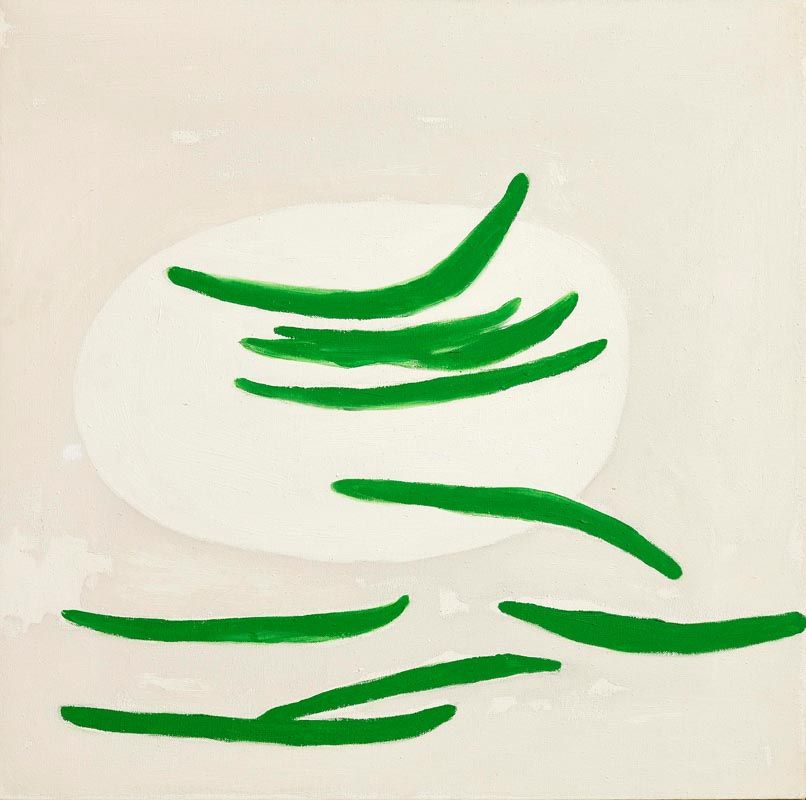
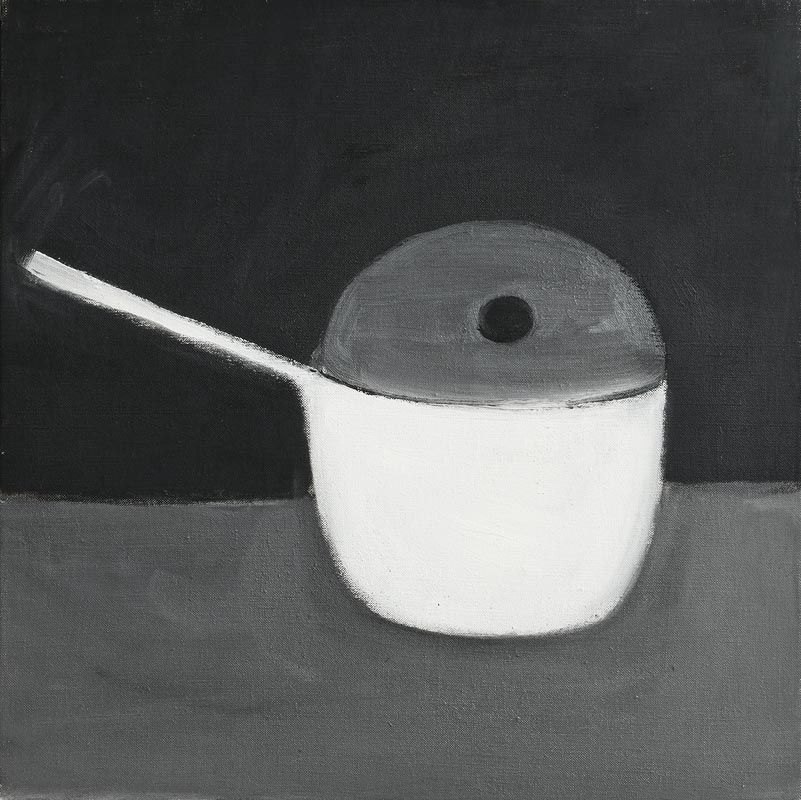
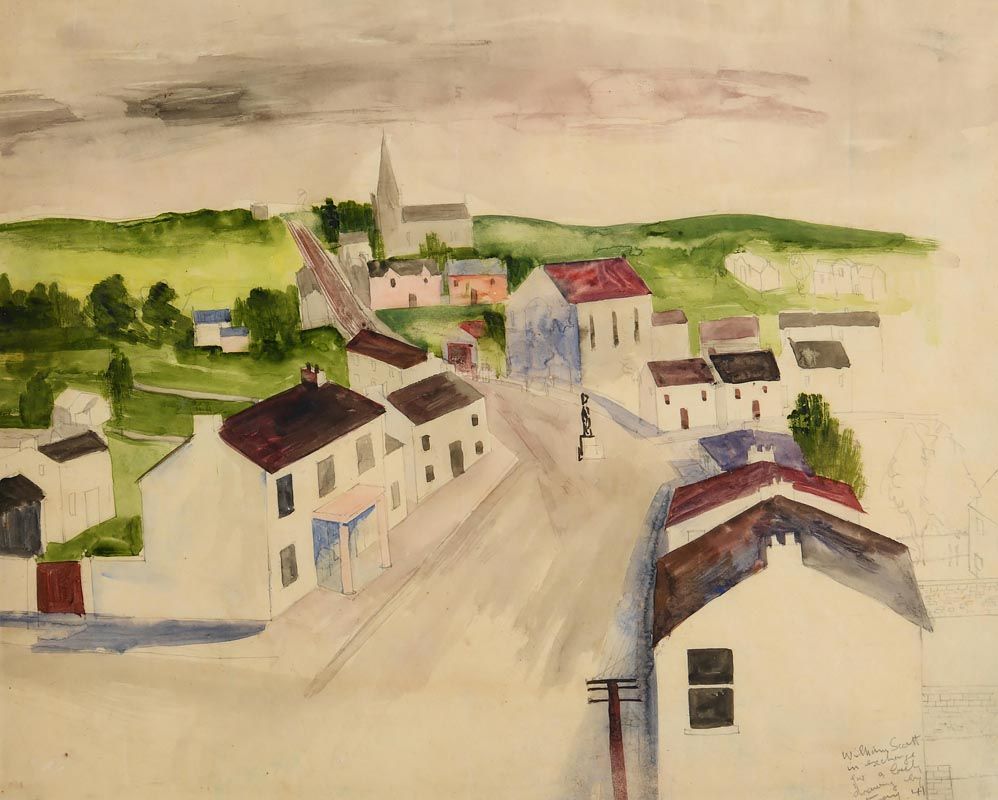
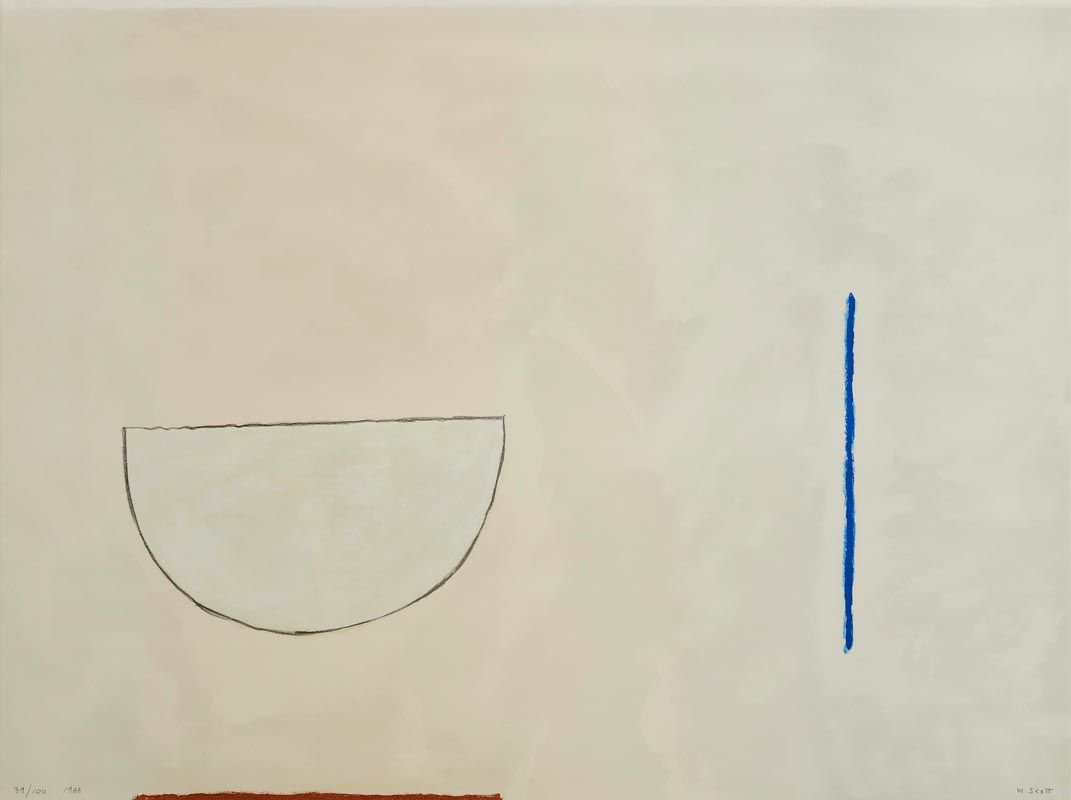
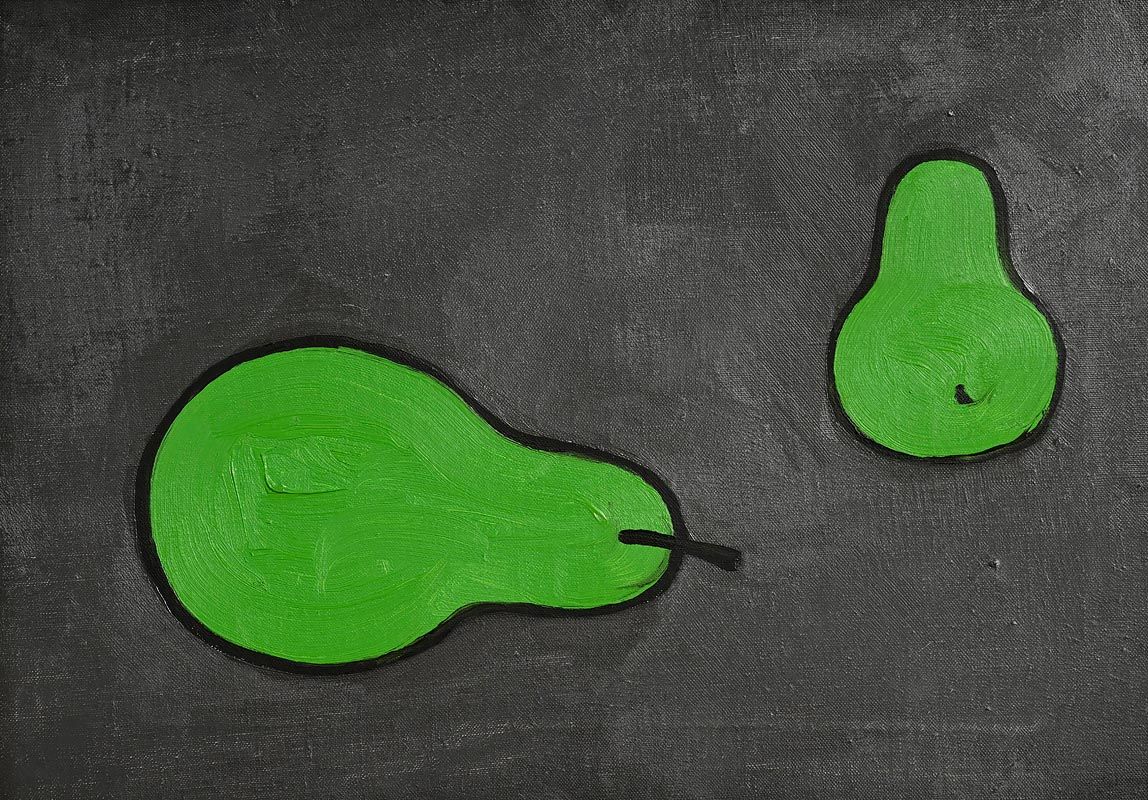
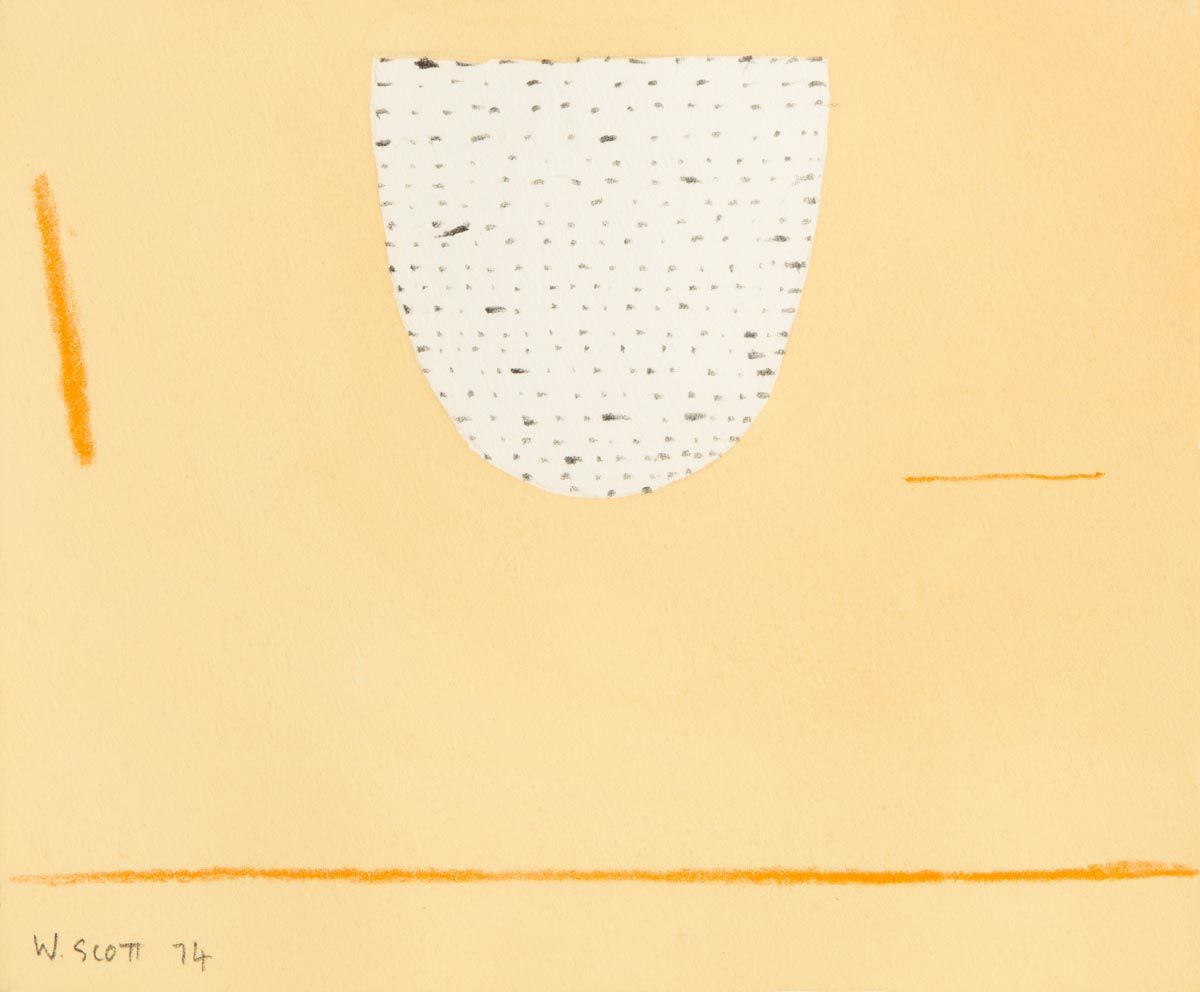
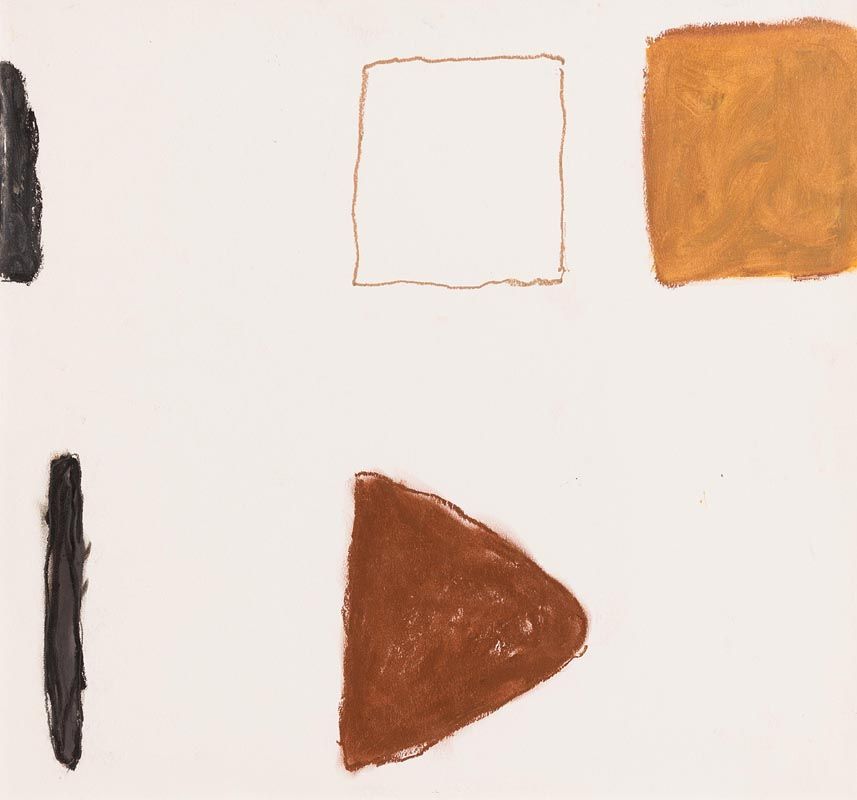
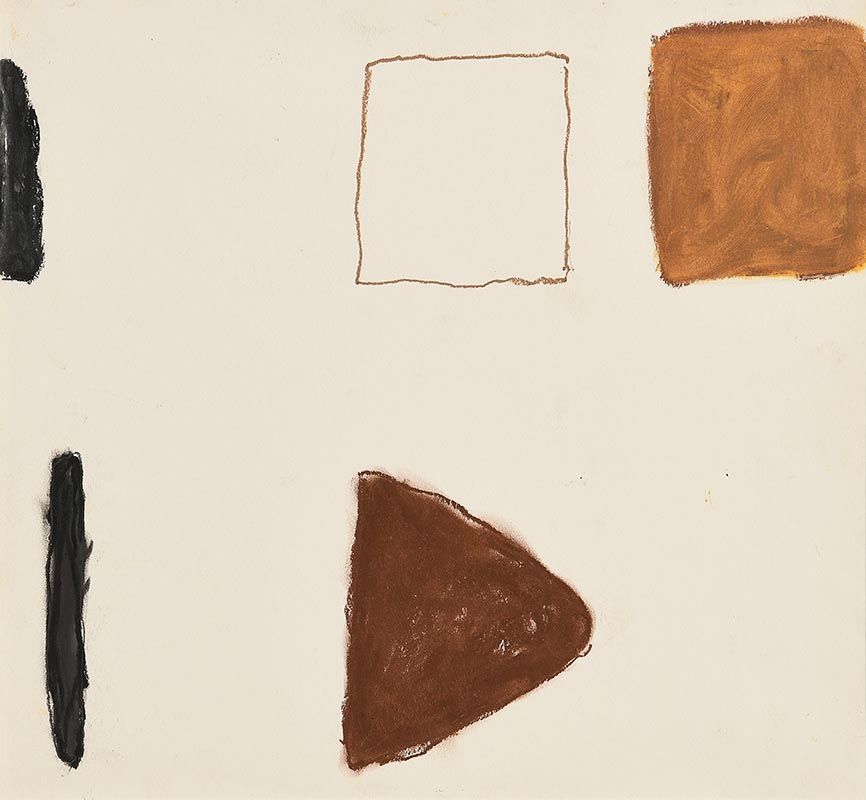
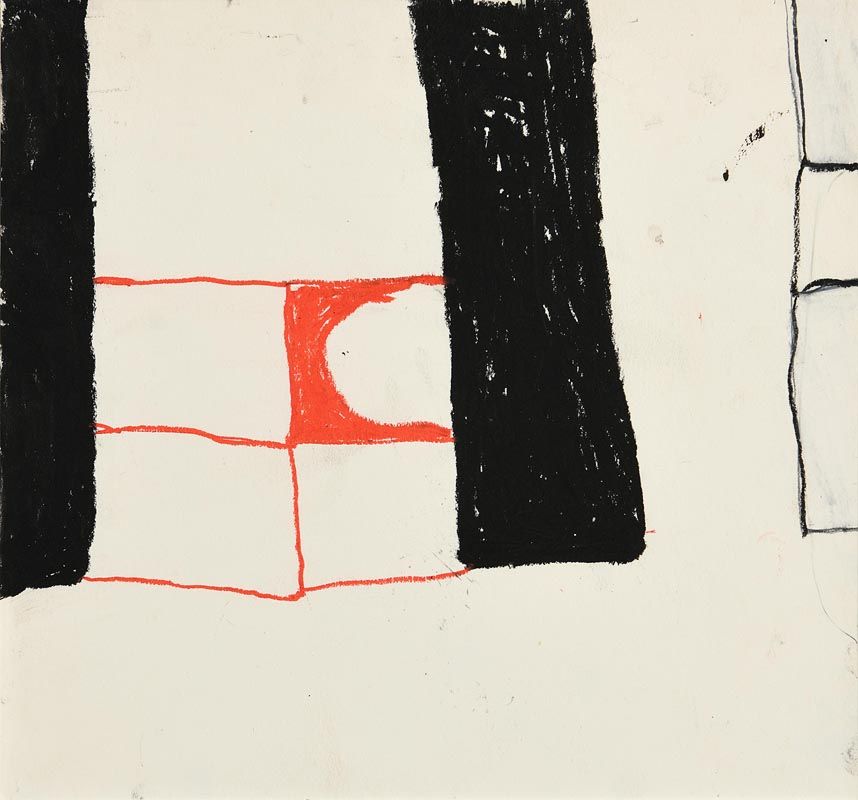

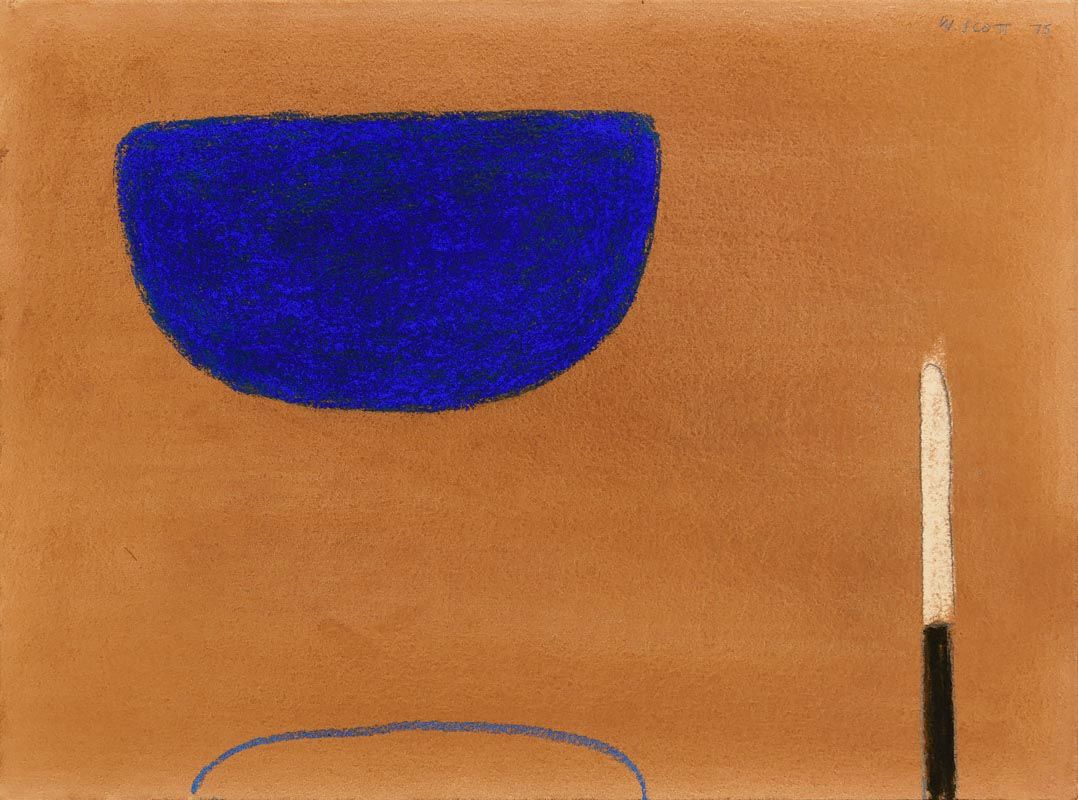
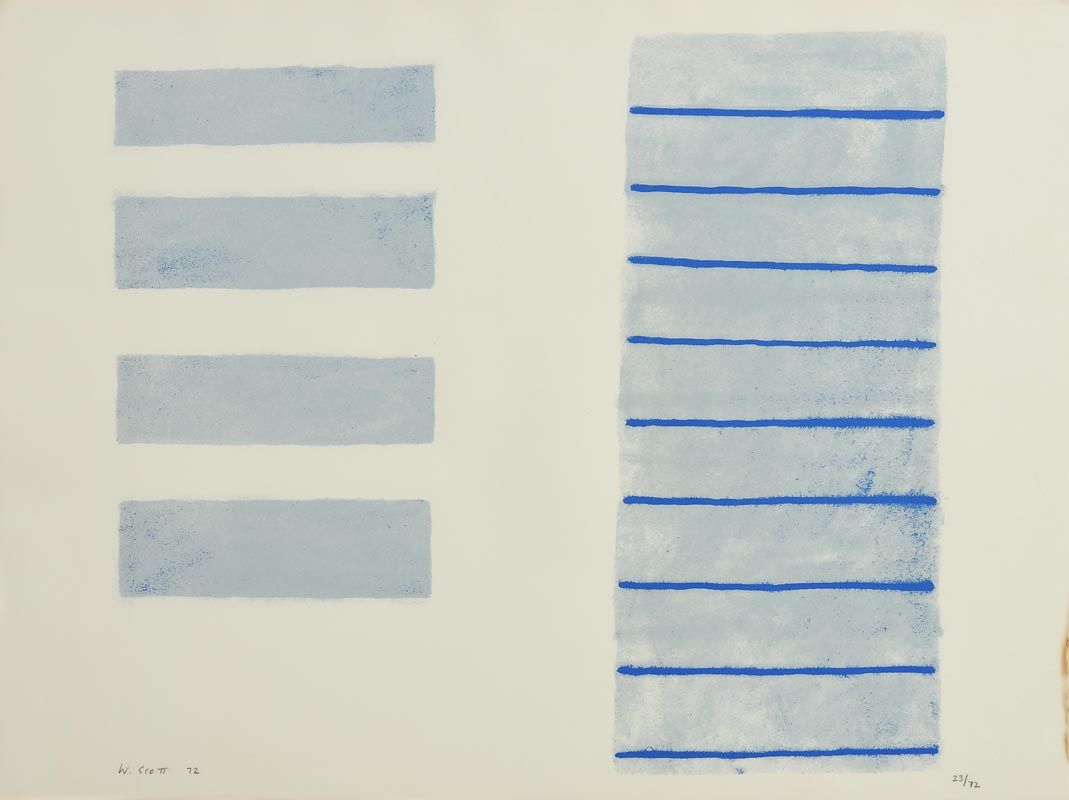
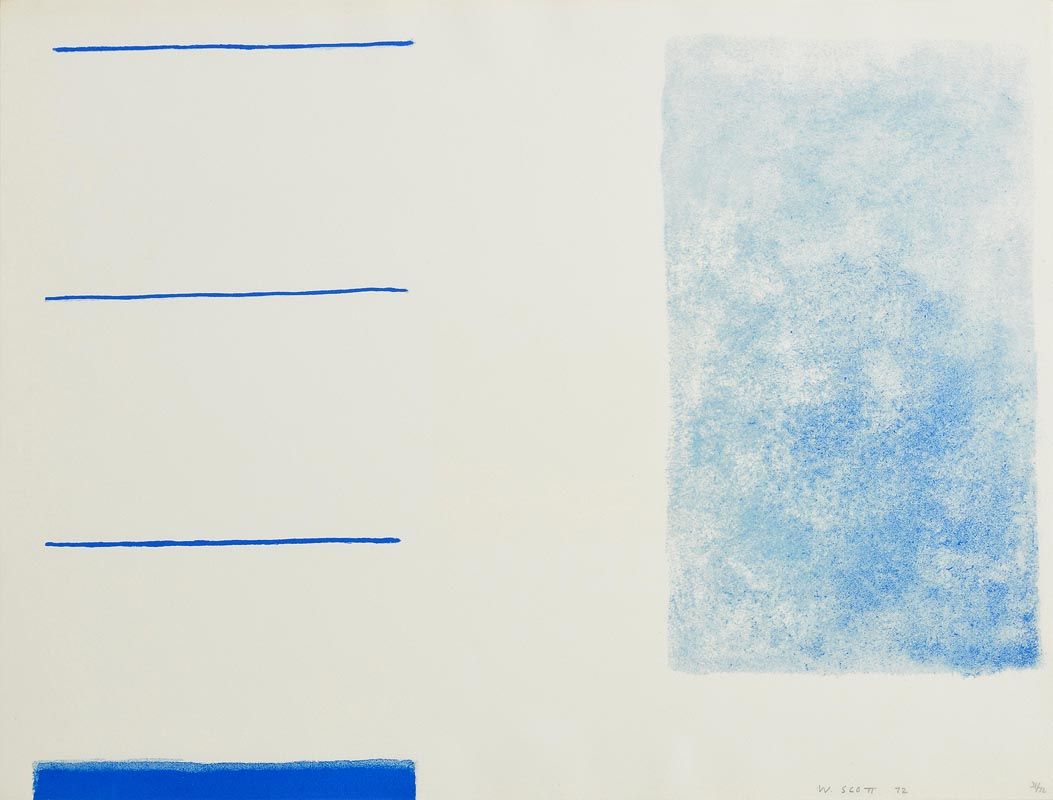


Try LotSearch and its premium features for 7 days - without any costs!
Be notified automatically about new items in upcoming auctions.
Create an alert